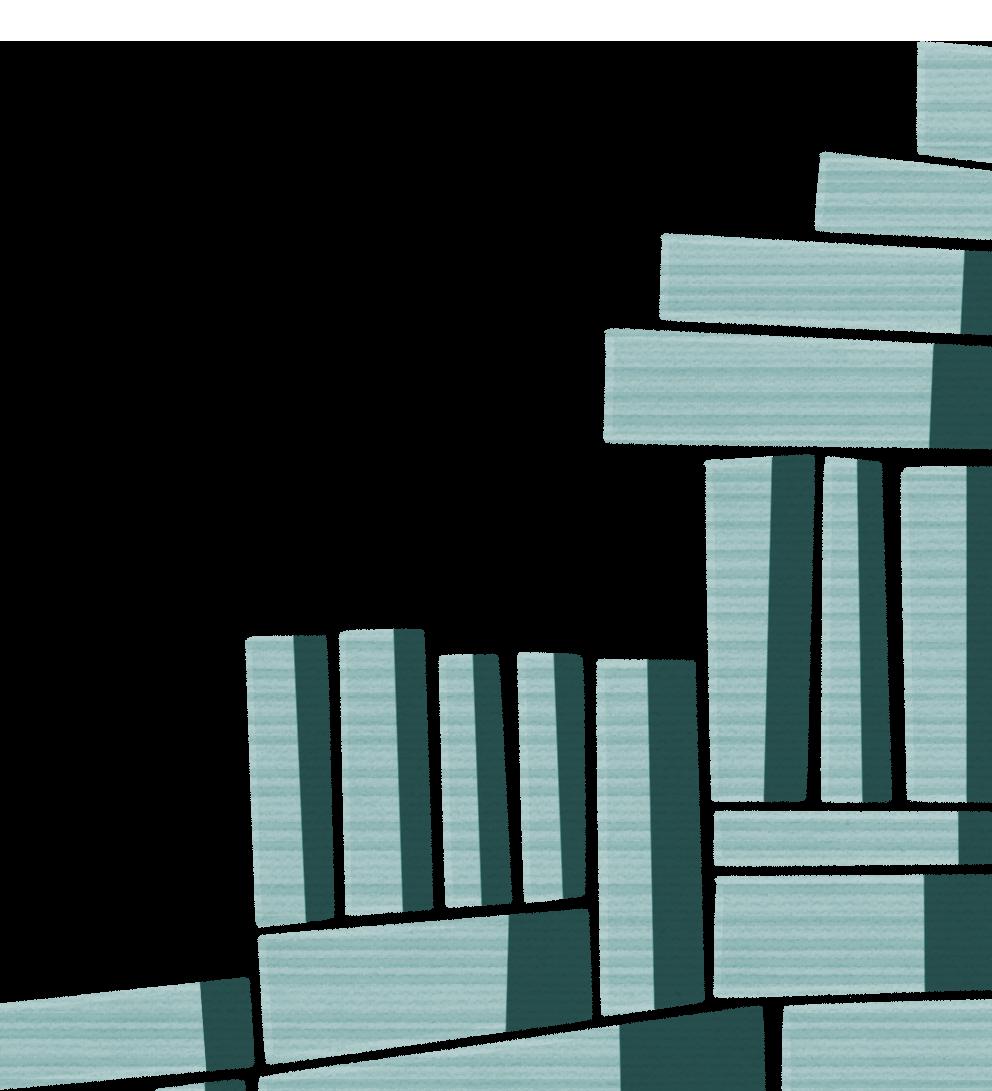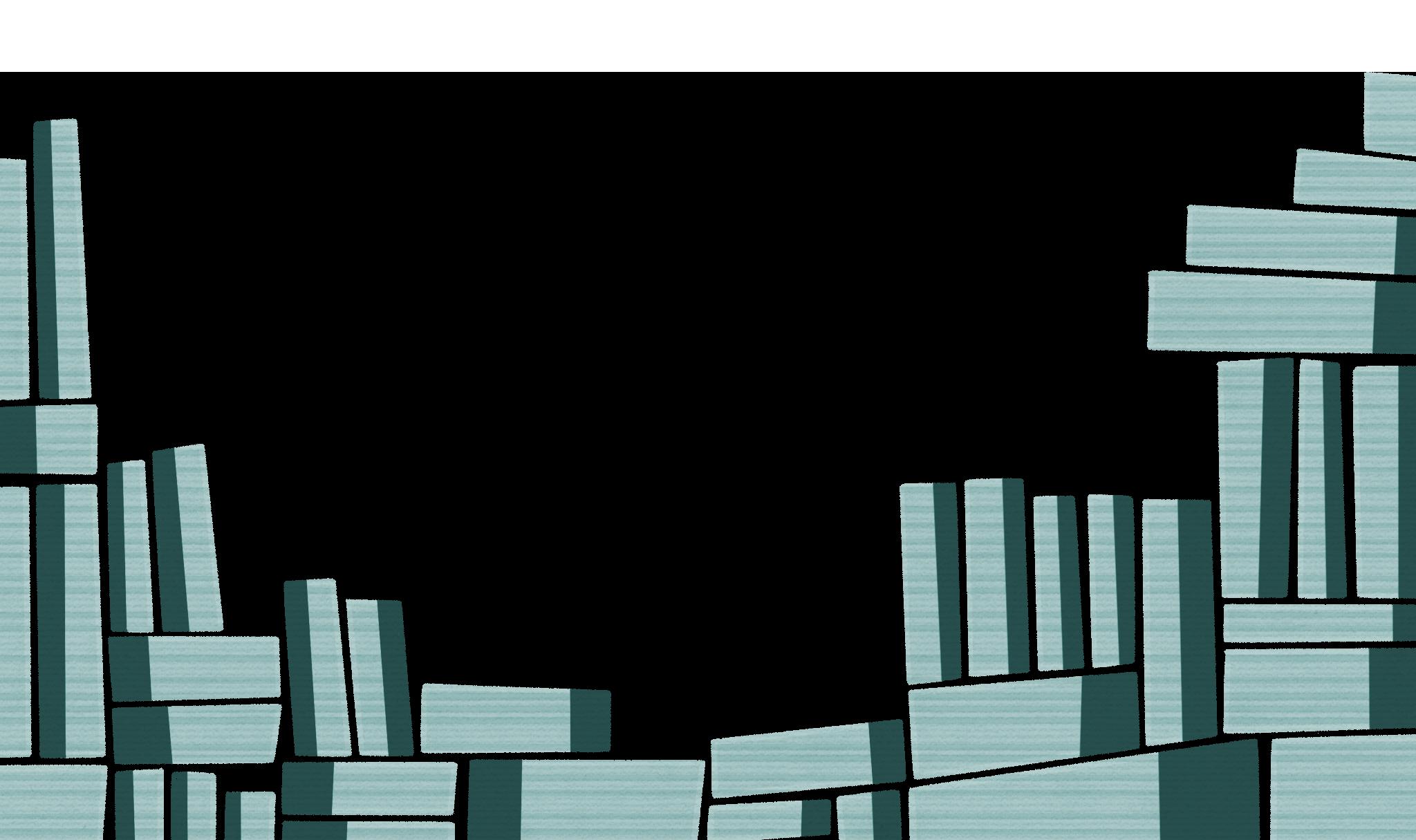
5 minute read
DO YOU KNOW HOW TO READ?
illustrated
by Jessai Flores
Advertisement
Iwas fed up. I had been close reading since my sophomore year of high school, and I couldn’t seem to stop. I agonized over the construction of sentences. I coaxed secrets from ambiguous words. Then, I combined these minutiae into a larger observation about the text, which would inevitably yield a vaguely potent conclusion.
A Comparative Literature class finally shocked me out of this method. In “How to Compare,” an introductory course for the major, Professor Samuel Hodgkin asked my classmates and me to write an eight-page literature paper without close reading a single time. Instead, our job was to analyze the mechanics of plot, or narrative form. The assignment catapulted my classmates and me into crisis. Simply put: nobody knew how to do it. We clamored for extra office hours and exchanged angry mutters in the hallways.
The English major does not require a literary theory course. The Comparative Literature major, by contrast, requires at least three. English students love to seize on this imbalance, mercilessly caricaturing the Comp Lit department. “The joke was,” said Comp Lit Professor Ayesha Ramachandran (who has two English degrees) “in English we read texts, and in Comp Lit they read theory.”
Could the joke, though, go in the other direction?
Hunched in a personal cubicle in Bass Library, sweating over my anti-close read- ing Comp Lit paper, I stared at my blank screen and laughed. After years of confidently cranking out English papers, I could not figure out where to start. In the serenity that was my life before literary theory, I had thought that close reading was the only way to approach a text. It was my reflex.
My harrowing Comp Lit paper set me on a path–I set out to learn how close reading had become ingrained in Yale’s undergraduate curriculum.
***
For much of Western history, interpretive close reading wasn’t a facet of literary criticism but a religious activity. In his Yale Open Course lecture series, “Introduction to the Theory of Literature,” Yale English Professor Paul Fry describes the religious origins of textual interpretation. Talmudic scholars, he said, understood biblical texts as mediatory documents for understanding the intention of the author, God. They used close reading to interpret and extract the Bible’s meaning. In the Christian tradition, the Protestant Reformation further spread Biblical close reading. In the absence of a priest’s interpretive help , individual worshippers relied on close reading to parse Scripture.
Romanticism brought interpretive close reading to literature. The movement reframed literary production as a moment of spiritual insight, arising from a spark of extraordinary genius. In increasingly secular
Western Europe, the literary creator became a placeholder for the divine creator. “There was a quasi-religious dimension,” said Dean of Yale College Pericles Lewis, a Professor of both Comparative Literature and English. “The poem became like a prayer.”
Recitals were commonplace in classrooms, and these displays of religious awe made their way to Yale’s English Department. William Lyons Phelps, who taught literature at Yale for 41 years before retiring in 1933, represented this trend. “He’d go in, quote rapturously, and be done,” Fry said. His classes were enormously popular, and alumni donated enough to name Phelps Gate after him.
By the 1930s, though, literature professors were exasperated. They wanted scientific rigor, not religious ecstasy. In Britain and the United States, New Criticism was born. In the view of the New critics, a literary text was a self-contained, unified whole. The text was cut off from the author at the moment of its birth. Rather than analyzing authorial intent, these professors used close reading to identify and resolve tensions within an autonomous text.
For many readers, this method of close reading was liberatory. Students without knowledge of historical background could now participate equally: close reading democratized access to texts. “You wouldn’t have to be an upper-class person with an upper-class education to say something meaningful about the text,” said Professor Katie Trumpener, a
Professor of English and Comparative Literature. “It makes you fearless.”
While New Criticism fell out of favor by the 1980s, its pedagogy persists. Most Yale English classes still prioritize close reading the text as a self-enclosed whole. Although class conversations now include the author and their context, undergraduates are rarely required to read secondary sources. “You are English majors,” Fry explained, “because of New Criticism.”

“Close reading is the number one thing which has been hammered onto the students,” said Michelle Ampofo ’24. Ampofo, an English and WGSS double major, said that in her experience, close reading has been prized above all else. “I don’t have a problem with that,” she added. “It’s helped me think. You have to dissect something and pick it apart before you know the thing fully.”
The close reading method of New Criticism, however—studying a text without regard to its author and context—eschews politics. Self-enclosed close reading does not, for instance, require a moral evaluation of American poet Ezra Pound’s fascist collaboration during WWII. It does not provide the tools to integrate Edmund Spenser’s position as an English colonial administrator in Ireland into interpretations of his works. “Although it was originally considered democratizing,” said Dean Lewis, “people now treat it as isolating the texts from social and political context, and being elitist in this way.”
Treating texts as autonomous also cannot interrogate the politics of canon formation. The study of modern English started 19th century India, when English colonial school systems assembled new canons of British authors to define and enforce British identity. They exported the result back to England. “English as a discipline is tied up with the question of Englishness,” Ramachandran said. “The canon wars are about the politics of inclusion and exclusion. What counts as English?”
Responding to students’ petitions to “decolonize” the major, the English department has reinspected its methods. The Department is now one of the few at Yale with a Diversity, Equity, and Inclusion committee. Likewise, faculty diversified the English Major’s introductory requirements, making “Comparative World Literatures” and “American Literature” equivalent to “Readings in English Poetry” I and II. Although the major has diversified its content, it has not yet diversified its form: the New Critical method of close reading is still widely (if imperfectly) implemented. Close reading of the quasi-autonomous text is prized above all.
A different form of close reading, however, can be integrated with political analyses. “I don’t think they’re really at odds with one another,” said Dean Lewis. “Most critics use some form of close reading. Freudians might do a close reading to get at psychological questions. Marxists may do close readings to reveal class divisions.” A student, for instance, could close read to unpack expansionist rhetoric within a text, using the method to interpret how colonization frames the desires of a character.
Close reading can be used as a political tool, but this usage has its own limitations. Stuffing history into a fifty-minute literature seminar can lead to a reductive understanding of both. Politicizing literature, too, could preclude the ecstatic human experience of being alone and free with a book. “Literature’s business,” said Sterling Professor of English David Bromwich, “is not to make you want to go out and do something.” Instead, he said, “the primary thing is to have a new feeling, an original feeling, which taps into some- thing. That feeling–you can’t always pick it up from life. You don’t have both binoculars and microscopes, which is what a work of art gives you.”
Every professor I spoke with agreed that close reading is crucial for a literary education. Careful attention to the details of a text, though, does not necessarily require treating the text as an autonomous whole. New Critical self-enclosed close reading does not have to be unthinkingly revered.
When I began research for this article, I felt that my English classes had duped me. I believed I was brainwashed into close reading the text as an autonomous, and I was alarmed by this method’s exclusion of politics. Now, though, I see that the method also has its virtues. It is democratizing. It prioritizes an individual’s creative and thoughtful relation with the text. It demands more than reductive historical causal claims.
“Reading of any value is an art, and certainly there's more than one kind of art,” Fry wrote in an email to me. I want an undergraduate education, then, which teaches me the multiple arts of reading. If and when we students choose to close read, we choose the form in which we practice it. We choose the end for which it is employed. We choose the questions we use it to ask.







